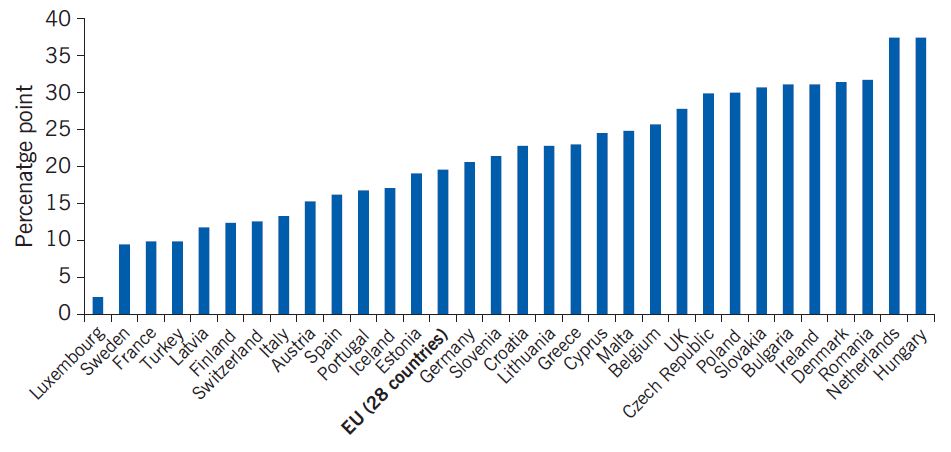December 3rd marks the International Day of Persons with Disabilities. In Europe, about one in eight people of working age (aged 15–64) report having a disability, defined as the presence of a long-term limiting health condition. Despite the introduction of a range of legislative and policy initiatives designed to eliminate discrimination and facilitate retention of and entry into work, disability is still associated with substantial and enduring employment disadvantages.
presence of a long-term limiting health condition. Despite the introduction of a range of legislative and policy initiatives designed to eliminate discrimination and facilitate retention of and entry into work, disability is still associated with substantial and enduring employment disadvantages.
An IZA World of Labor article by Melanie Jones (Cardiff University) scrutinizes the relevant literature and points to possible policy solutions to reduce labor market discrimination.
As the figure shows, the gap in the employment rate between those who report a disability and those who do not is substantial. Identifying the reasons for the enduring employment disadvantages is complex, but critical to determine effective policy solutions that reduce the social and economic costs of disability disadvantage. While a large part of the employment gap is due to the disability itself, less than half of the gaps in employment and earnings are typically explained by other observable factors, such as education.

Discrimination may be overestimated
However, the exact reasons for the residual disadvantage remain contested, because it is difficult to separate the influence of the disability on productivity and preferences for work from discrimination, resulting in a risk of discrimination being overestimated. Nevertheless, despite the introduction of legislation that prohibits disability discrimination in countries such as the UK and the US, there is little evidence that this has led to a narrowing of the disability employment gap.
As disability is heterogeneous, differences in the type, severity and chronicity of a disability have to be taken into account when designing effective support mechanisms. Recent studies highlight the importance of a more tailored policy response and, in particular, matching individual job demands to functional limitations in order to mitigate negative productivity effects in work. A critical role is played by the employer, who has to ensure effective occupational health by supporting flexibility and adjustments to work in order to enable employees to retain or reengage with work.
More incentives for disabled individuals to remain in work
The government also plays an important role in this regard, such as by providing incentives for employers to retain disabled workers and by designing welfare systems that support working disabled individuals. In contrast, many current welfare schemes provide permanent support conditional on not working. The broadening of permitted employment and the provision of temporary financial support to facilitate work-related adjustments would provide greater incentives for disabled individuals to remain in work, or return to work, when they are able.